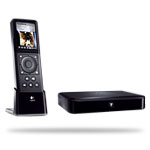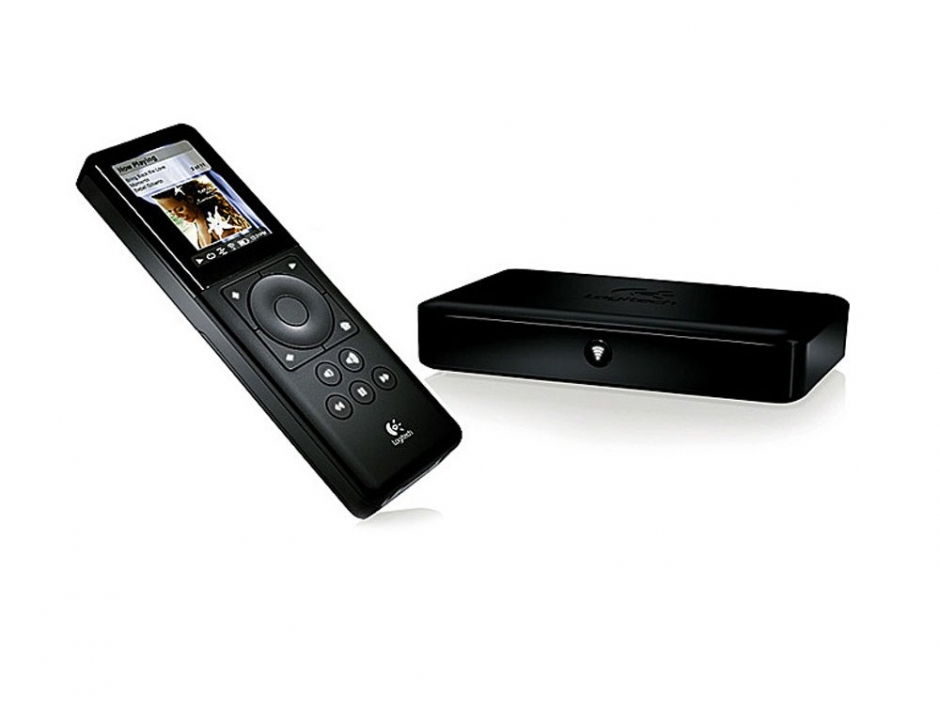Sonos versus Logitech Squeezebox Duet Digital Music Systems Building a system to play your digital music collection throughout the house is frought with the difficulties attendant to the Tower of Babel. The higher you reach, the more you will bang your head on the fractured welter of competing formats and copy protection schemes (DRM). Can either the Sonos or Logitech systems deliver?
Building a system to play your digital music collection throughout the house is frought with the difficulties attendant to the Tower of Babel. The higher you reach, the more you will bang your head on the fractured welter of competing formats and copy protection schemes (DRM). Can either the Sonos or Logitech systems deliver?
Ideally, a digital home music system should be able to aggregate digital music from on-line streaming and download services as well as ripped CDs. It should make music fast and easy to find. It should work seamlessly across different genres of music. I recently tested two music systems from Logitech and Sonos to see if the time is ripe for these digital music systems. Depending on the size of your music collection, and the type of music you enjoy, the answer may be "yes".
Similarities and Difference
The Logitech Duet ($399) and the Sonos BU150 Multiroom Music System ($999) share surface similarites. Both relay music from your computer to different rooms in your house. Neither stores your downloaded music on its own - your PC or (in the case of the Sonos) other server must be on in addition to the music system - a consideration today as electrical rates soar. I would have preferred to be able to attach a hard disk to the systems and have them serve up the music to my home network.
While the Logitech Duet relies on your home network's wireless system, Sonos uses a proprietary "mesh" network. If you're gong to be streaming music to multiple rooms simultaniously, say the kitchen and living room, the Sonos provides a more reliable, stutter free listening experience. However, if you're just trying to get the music from one room to another, the Logitech worked reliably across our wireless router.
Both systems include a base station, wireless controller, and charger/docking stations. This gives you the ability to listen to your music in another room, wirelessly, via your sound system. The Sonos system also gets music into a second room by including an amplifier/receiver and speakers. You still only get one controller unless you spring for an optional second unit ($399).
Setup and Limitations
Setting up the Logitech system was extremely easy. The base station plugged into the audio inputs on my receiver - I chose the optical input, though coax and standard analog RCA inputs are also available. Once the unit is attached and powered, a software wizard detects the network, installs the music server software, and finds your attached music.
The process with Sonus is very similar, though a few more wires are required. First you plug in a wireless bridge, then a receiver, and finally, the second receiver and wired speakers. If you've ever hooked up a wireless home network and a stereo system, neither of these products will pose any surprises.
I did get a big surprise, however, when I found that Sonos could not handle my admitedly large audio collection. Depending on how many tracks you have, the limitation of 65,000 tracks may not hinder you, but for personal use it was a deal breaker. If you're ripping a large CD collection you could easily find this limitation a real problem.
Both systems allow you to stream various online sources over your network. Internet Radio and various music services (including - for an optional subscription - Sirius Satellite Radio) can be controlled in every room in the house. The Sonos also works with the Napster and Rhapsody subscription services; Rhapsody doesn't yet play Napster.
Formats and Sound Quality
I tested both systems with digital input into my Denon receiver and both performed as well as the source material provided. If you're listening to pop music, downloaded tracks will probably be good enough for average listening. The limitations of the compressed mp3 format were, on the other hand, very noticable when playing back classical music at anything other than background listening. This isn't a fault of the players, it is inherent in the format. You'll hear it as a "fuzziness" or worse in the strings as the audio equivilent of the artifacts that sometime ruin digital photos when they are enlarged.
If you're playing back music you've ripped from audio CDs using a lossless audio format, such as flac, you'll fare much better. The tracks I created in flac using the MediaMonkey program played back very well; nearly as good as the original CDs.
While both systems handle a wide range of audio formats, neither plays DRM'd tracks from Apple or the Zune store.
On the other hand, the Logitech Squeezebox Duet handled two important lossless formats that the Sonos choked on: Apple Lossless and WMA Lossless. For me, the latter was essential as I had already dozens of albums recorded using the lossless format provided by Microsoft. Converting all those tracks to flac would have been a significant undertaking. Again, advantage Logitech.
Music Controllers
I also much preferred the sleek, colorful, sharp music controller of the Logitech system. The lightweight controller features a screen that displays album art and information coherently. While Sonos and Logitech use scroll wheels similar to classic iPods, the Sonos controller really requires two hands to operate, whereas the Logitech unit looks and feels like a top of the line remote control.
Extendability
Both Sonos and Logitech offer multiple ways to listen to your music collection that go beyond the basics. You can add extra controllers, amplifiers and powered speakers. Logitech even offers a no-compromise $2000 player that features XLR and BNC Connections for listeners with golden ears. The (included) Sonos amplifier/speaker combo provides excellent sound quality for a second room, though both the speakers and amplifier are hardly inconspicuous or petite. In other words, gadgetphiles, check with your significant other before assuming that she (or he) will be happy integrating them into her (or his) carefully decorated space.
Classical Music shows the Limitations
Classical Music is a real challenge to the digital format, not just because of the required audio quality, but because it organizes differently from pop music. Track titles are often longer than pop tracks, they have more artists, the composer is significant, and track order is often critical: you don't play the Wagner's Ring Cycle in shuffle mode.
On the PC, music programs have been created to address these special needs. MediaMonkey, for instance, lets me create special views for my classical collection, ordered by composer, album, and track number.
Neither the Sonos nor the Logitech systems give this kind of flexibility. This can make it difficult to find the music you want. On both systems, once you click on the genre "classical", tracks are organized by "artist", not album. This completely made it impossible to dig down from genre to album.
Worse, the Sonos handheld controller doesn't scroll track information. If you have multiple versions of Beethoven's 9th Symphony, it may be impossible from the display screen to identify which album is the one you want to play.
Conclusion
Neither system has the flexibility required for hard core classical music fans. However, for most users seeking to bring pop music from the computer room to the living room or expand their investment in satellite radio, the Logitech Squeezebox Duet provides a good investment at a reasonable price. Unless you need a system that can stream content to multiple rooms simultaniously it should be sufficient. The Sonos system will appeal to those setting up systems in larger homes with multiple play zones. Both offer excellent sound, but the balance tips for me primarily on support for a wider range of significant lossless music formats, hardware design, and simplicity of operation.


